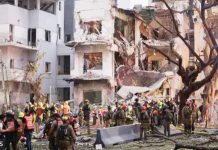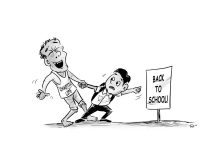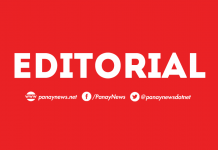
TRAFFIC congestion remains one of the most pressing issues in our country, especially in urban areas like Metro Manila.
With the Marcos administration’s commitment to modernizing infrastructure and improving quality of life, I respectfully recommend that the government, through the Department of Transportation (DOTr), adopt a more comprehensive and technology-driven approach to solving traffic problems.
Below are key actions for consideration:
1. Broaden Participation in Traffic Solutions
Open the process of studying and addressing traffic flow issues to more participants, ensuring a participatory approach. Make the activity interdisciplinary and multidisciplinary, integrating expertise from urban planning, engineering, behavioral sciences, and data analytics.
2. Engage Experts and Research Institutions
Involve scientists and specialists from the National Academy of Science and Technology (NAST) and Future Earth Philippines. Include the National Center for Transportation Studies (NCTS) at the University of the Philippines (UP) for their expertise in traffic management research and training.
3. Foster Institutional Collaboration
Require the DOTr and the Metropolitan Manila Development Authority (MMDA) to work collaboratively, promoting synergy between agencies. Expand the planning parameters from Metro Manila to Mega Manila, involving Regional Development Councils (RDCs) of surrounding provinces. Engage private toll road and expressway operators like SMC Infrastructure to ensure a unified approach.
4. Utilize Advanced Data and Technology
Leverage data sources such as Google Earth, Google Maps, Google Street View, Waze, Planet.com, NAMRIA, Japan International Cooperation Agency, United States Aid for International Development, Asian Development Bank, Department of Information and Communications Technology, and MMDA datasets. Work with the Philippine Space Agency (PhilSA), the Advanced Science and Technology Institute (ASTI), and other relevant DOST agencies to analyze traffic data. Employ AI and machine learning to optimize traffic flow and predict congestion patterns. Use drones to gather real-time data on traffic flows and hotspots.
5. Implement Specific Metrics and Measures
Define success through measurable parameters, such as achieving specific average traffic speeds in kilometers per hour (kph). Study strict enforcement of emissions laws and car safety standards to reduce the number of vehicles on the road. Enforce stricter penalties for repeat traffic violators, including driver suspensions, to improve road discipline.
6. Promote Sustainable Transport Practices
Expand the bus carousel and looping concepts for better public transport efficiency. Promote ride-sharing initiatives for suburban commuters. Ensure train stations are equipped with parking lots and integrated with bus and jeepney routes for seamless transfers.
7. Upgrade Infrastructure and Surveillance
Upgrade CCTV cameras to enable QR code, RFID code, barcode, and license plate reading, as well as facial recognition. Equip command and control centers with the capability to electronically bill traffic violators and monitor road activity effectively.
8. Economic Justification and Investment
Compute the daily economic cost of traffic jams and allocate equivalent investments in traffic control solutions.
9. Traffic Education and Awareness
Include driver education as part of the curriculum at all school levels to instill road discipline and awareness from an early age.
Addressing traffic congestion requires an all-hands-on-deck approach. By integrating advanced technology, interdisciplinary expertise, and multi-sector collaboration, we can alleviate the burden of traffic jams on Filipinos, enhance economic productivity, and improve our overall quality of life./PN







